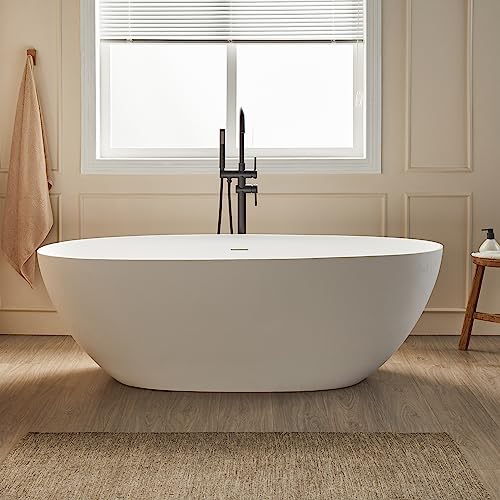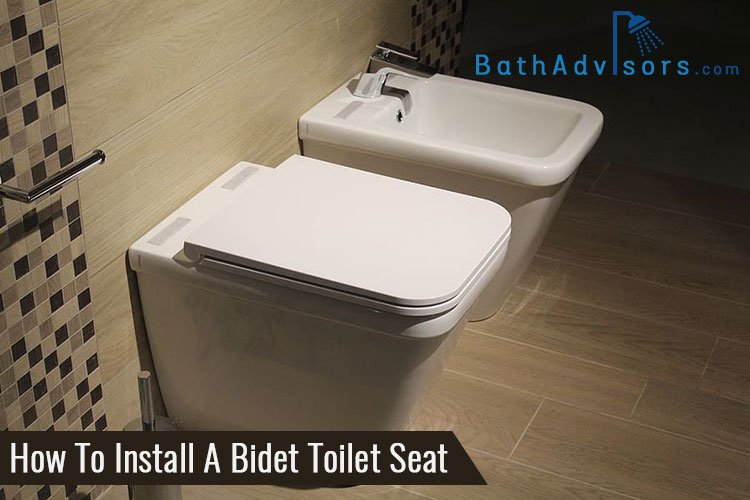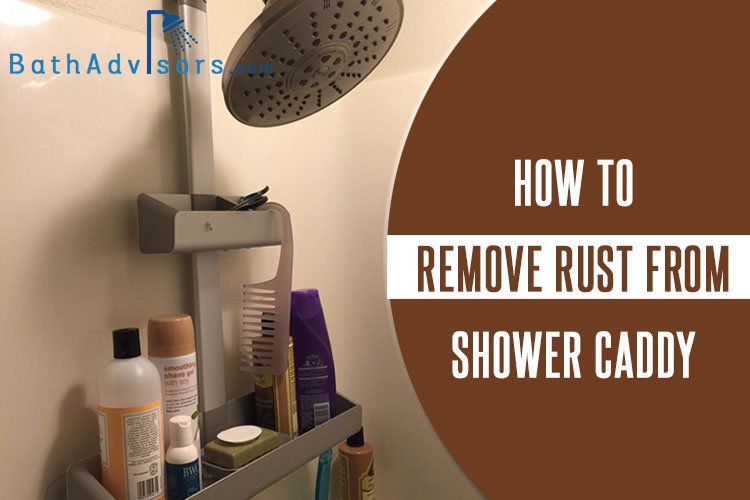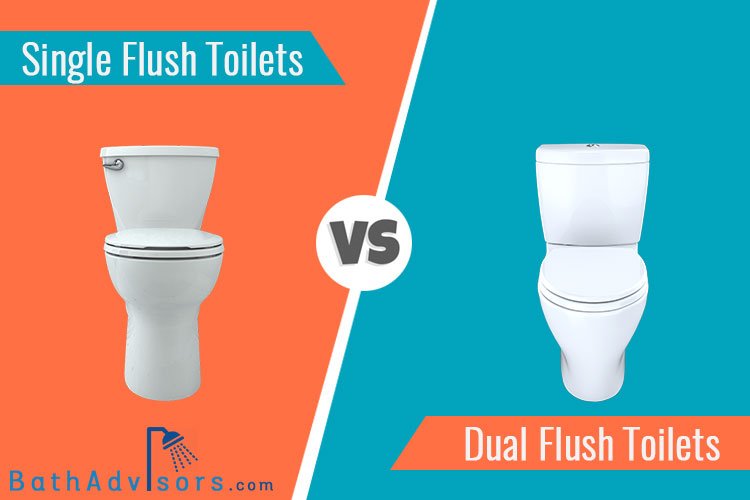Undeniably, the tub is a key feature of your bathroom thanks to its significant stature that attracts all the eyeballs. When it comes to choosing a bathtub, most people just focus on the aesthetic appeal and ignore the material.
If you are like most homeowners who want a luxurious, durable, and aesthetic bathtub, resin and acrylic must be on your list.
While there are several differences, the similarities between these two materials make it even more daunting to decide, and some homeowners end up making wrong decisions. However, the confusion has now come to an end, as this article breaks down the comparison between resin vs. acrylic tubs.
I’ve even covered the pros/cons of both materials, so go through the article and take home the right bathtub today!
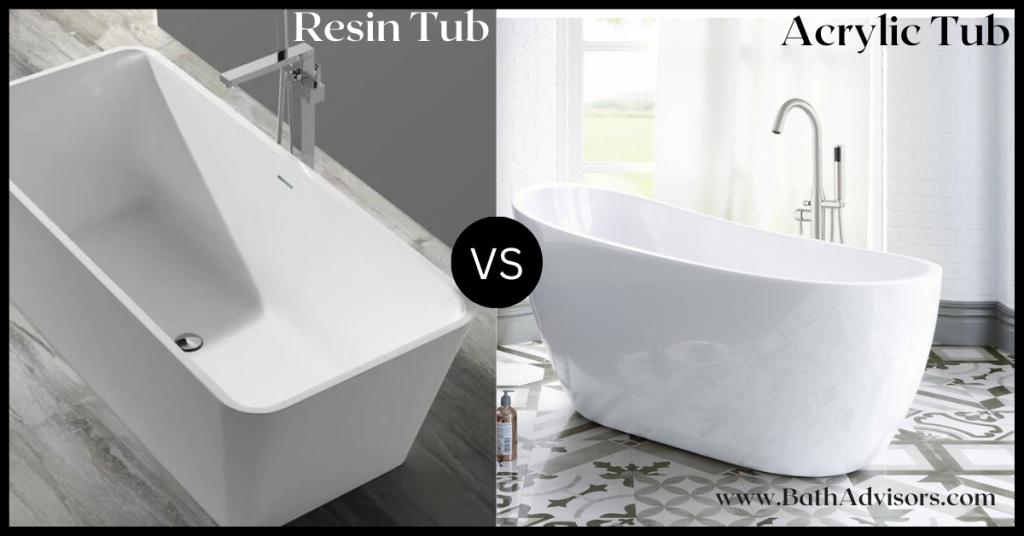
How Did I Compare Resin vs. Acrylic Tubs?
Every bathtub looks good when it’s new, but one only knows about the downsides after using it for some time. To find out what is the difference between acrylic and resin bathtubs, I consulted with bath experts and spoke to homeowners with experience with both tubs.
The bath experts provided me with technical information about the material composition, durability, maintenance requirements, installation, and compatibility, as well as the style and appearance of resin and acrylic tubs. At the same time, the homeowners shared their firsthand experience with both types of tubs.
I compiled all the details in this article to help you choose the right bathtub material for your home.
What are Resin Tubs?
Resin tubs are a popular option for homeowners who are looking for a durable and long-lasting bathtub. Typically made from a mixture of resin and filler materials, such as crushed stone, minerals, or fiberglass, these tubs are known for their excellent scratch resistance, as well as their ability to retain heat.
Resin tubs are also relatively heavier, making them slightly more difficult to install than other types of tubs. Additionally, they may be more expensive than other types of tubs because of their aesthetics and high-quality construction.
You can find these bathtubs in a variety of shapes and colors, and resin tubs can also be designed to fit into any bathroom style.
- 🛁STONE RESIN Bathtub:This soaking tub is made of stone resin and and unlike a thin acrylic...
- 🛁Spacious Dimensions: The bathtub measures 65 inches, making it a relatively spacious tub. It...
- Freestanding Soaking Bathtub , Solid Surface, Matte White.
- Oval Shape, roll top bath, allow bathers to enjoy a more relaxing soak.
- 【DIMENSIONS AND SPECIFICATIONS】Exterior Dimension: 59" L x 30.71" W x 22.05" T – Effective Tub...
- 【PREMIUM QUALITY CONSTRUCTION】 CPINGAO bathtub is made of premium pure acrylic solid surface...
What are Acrylic Tubs?
Acrylic tubs are highly famous for their comfort and versatility. Homeowners also choose them because they are low on maintenance and can easily last for years.
Made using vacuum-formed acrylic sheets and reinforced fiberglass, these tubs offer decent durability and a glossy appearance. The color options don’t end at white, and you can find acrylic bathtubs in plenty of colors and designs to complement your bathroom style.
Acrylic tubs are also a great option for those who want a functional and stylish bathtub without breaking the bank.
- Spacious Dimensions: With a generous size of 67 inches in length and 31.5 inches in width, this...
- Matte White Finish: This free standing bathtub boasts a matte white surface that not only adds a...
- 🛁DOUBLE SLIPPER SHAPE: enjoy and relax in our modern seamless freestanding soaking bathtub by...
- 🛁DIMENSIONS AND SPECIFICATIONS: flexible pop up chrome drain and slotted overflow...
- DIMENSIONS AND SPECIFICATIONS: Exterior Dimension: 59" Long x 28 3/4" Wide x 27 1/2" Deep –...
- PREMIUM QUALITY CONSTRUCTION: Woodbridge bathtub is made out of 100% high gloss white LUCITE acrylic...
Resin vs. Acrylic Tubs: A Head-to-head Comparison
Resin and acrylic tubs have plenty of similarities that mask the differences and make it difficult to decide. In this section, I’ve covered the similarities as well as the differences to help you understand the ins and outs of each tub material.
Similarities between Resin and Acrylic Tubs
One key similarity between resin and acrylic tubs is that both materials are non-porous. This means that they do not absorb water or stains, which makes them easier to clean and maintain.
Additionally, both types of tubs are available in numerous styles, shapes, and sizes, and you can find a tub that fits your specific needs and preferences.
Another similarity between resin and acrylic tubs is their resistance to fading and discoloration. Both materials are highly resistant to UV rays, so they will not fade or discolor over time when exposed to sunlight. This makes these tubs a good choice for bathrooms that receive a lot of natural light. Lastly, both types of tubs are relatively easy to repair if they become damaged.
Differences between Resin and Acrylic Tubs
While resin and acrylic tubs have a range of similarities, there are some key differences between the two that may make one more suitable for your needs than the other.
One of the main differences between resin and acrylic tubs is the material they are made from. Resin tubs are typically made by pouring a mixture of resin and filler materials into a mold, which creates a solid, dense structure. Acrylic bathtubs are made from a type of plastic called acrylic polymer. While acrylic is a durable material, it is not as strong or dense as resin.
Another difference between resin and acrylic tubs is their weight; resin tubs are relatively heavier than acrylic tubs, which certainly affects the installation process.
Feature-wise Comparison of Acrylic vs. Resin Bathtubs
-
Heat Retention
When it comes to heat retention, resin tubs are known for their superior performance compared to acrylic tubs. Resin is a denser material than acrylic, and it has better-insulating properties. It means that resin tubs can retain heat for longer periods of time, making them a better choice for those who enjoy long soaks in the bath.
Acrylic tubs, on the other hand, tend to cool down more quickly. While they are also good at insulating against heat loss, they are not quite as effective as resin tubs. If you are considering a tub for long soaks, you may need to add more hot water to an acrylic tub to maintain a comfortable water temperature.
-
Durability
Resin tubs are generally considered to be more durable than acrylic tubs. This is because the resin is a stronger material that is less prone to scratches and chips than acrylic. On the other hand, acrylic tubs are made from a type of plastic called acrylic polymer.
While acrylic is a durable material, it is not as strong as resin. Therefore, it is more prone to scratches, chips, and other damage.
-
Lifespan
The lifespan of a bathtub primarily depends on how you maintain and care for the tub. In general, a good-quality branded resin tub can last up to 20 years or more, while an acrylic tub can last around 10-15 years.
-
Cost
Resin is an expensive material, and that affects the cost of the bathtub. Some resin tubs can be double the cost of an acrylic tub of the same dimensions. If you go for patterns and exclusive colors in a resin tub, be ready to spend more, as luxury comes at a cost.
-
Weight
In terms of weight, resin tubs are generally heavier than acrylic tubs. Typically made with a combination of resin and filler materials, resin tubs have a solid, heavy structure. Also, they can be more difficult to install and may require additional support to prevent structural damage.
Acrylic tubs are lighter and easier to install due to their lesser weight. These tubs are also more flexible than resin tubs, which makes them less likely to crack or break during installation.
-
Appearance
Both acrylic and resin tubs come in a wide range of colors and sizes to suit different bathroom designs. Acrylic tubs are known for their glossy finish, while resin tubs can have a more matte or textured finish.
-
Maintenance
The maintenance regime of an acrylic tub is simple, as you can use a regular tub cleaner to keep it squeaky clean. However, a resin tub requires a custom cleaning regime depending on the material and pattern of the tub. Using chemical-based cleaners is a strict no for resin tubs.
-
Sound Absorption
Resin tubs absorb more sound than acrylic tubs, making them a better choice for homeowners who want a quieter bathroom environment. Since acrylic tubs don’t absorb sound, you can expect the noise of water and other sounds in your bathroom.
-
Environmental Impact
Acrylic tubs are generally considered more environmentally friendly than resin tubs, as the resin is a petroleum-based material that is not as easily recycled. If you like a tub with a lesser environmental impact, choosing an acrylic tub makes sense.
Resin vs. Acrylic Tubs: Pros and Cons
Pros and Cons of Resin Tub
- Extremely durable and resistant to scratches
- Easy to clean and maintain
- Superior heat retention for a soothing bath
- These tubs have an exclusive appearance and style
- Generally heavier and difficult to install
- Resin tubs are expensive
- Freestanding Soaking Bathtub , Solid Surface, Matte White.
- Oval Shape, roll top bath, allow bathers to enjoy a more relaxing soak.
- 【DIMENSIONS AND SPECIFICATIONS】Exterior Dimension: 59" L x 30.71" W x 22.05" T – Effective Tub...
- 【PREMIUM QUALITY CONSTRUCTION】 CPINGAO bathtub is made of premium pure acrylic solid surface...
- 【Specification】Exterior Dimension: 61.02"L x 29.92"W x 22.05"T. Soaking Depth: 15". Effective...
- 【Gracefully Thin Edge Design】 Our 61.02 inch Stone Resin Freestanding Bathtub features an...
Pros and Cons of Acrylic Tub
- Lightweight and easy to install
- Affordable so accessible to a wider range of budgets
- Require less maintenance in the long run
- Available in beautiful patterns and colors
- They may fade and chip off over time
- Poor insulation and heat retention
- ❤COST-EFFECTIVE: Made of high-quality acrylic, this bathtub tray is sturdy and durable, avoiding...
- ❤UNLIMITED DESIGN: The full-flat bathtub rack makes the placement of items unlimited. You can...
- 🛁ELITE MATERIALS FOR AN ULTIMATE BATHING EXPERIENCE: Our bathtub is meticulously crafted from...
- 🛁HASSLE-FREE INSTALLATION & UPKEEP: We provide a comprehensive, easy-to-follow installation...
- 🛁【Product Size】59" Long x28.74" Wide x 22.83" Deep – Effective Tub Capacity58.1 Gallons,...
- 🛁【Ergonomic Design】bathtub is luxury comfort and chic style Its size is ample yet economical...
FAQs
Q: Do acrylic tubs crack easily?
Acrylic tubs are generally not prone to cracking under normal usage. However, they may be more susceptible to scratching, chipping, and other forms of damage. Proper care and maintenance can help to minimize the risk of damage and extend the lifespan of the tub.
Q: Which one is better for a modern bathroom design, a resin or acrylic tub?
Both resin and acrylic tubs can work well for a modern bathroom design, depending on the specific style and aesthetic that you are looking to achieve. Resin tubs tend to have a more high-end and luxurious look, while acrylic tubs are often more affordable and come in a wider range of colors and styles.
Q: How Heavy Is A Stone Resin Bathtub?
The weight of a stone resin bathtub can vary depending on its size and shape. On average, a standard-sized stone resin bathtub can weigh between 200 to 300 pounds. Larger or more elaborate designs may weigh even more.
Final Thoughts
As you know the difference between resin versus acrylic tubs, it’s time to make a decision to upgrade your bathroom. Consider every factor, such as cost and ease of installation, and weigh all pros/cons to ensure you get the best tubs for your needs.
Let me know what you think is the best tub among acrylic and stone resin bathtubs.



